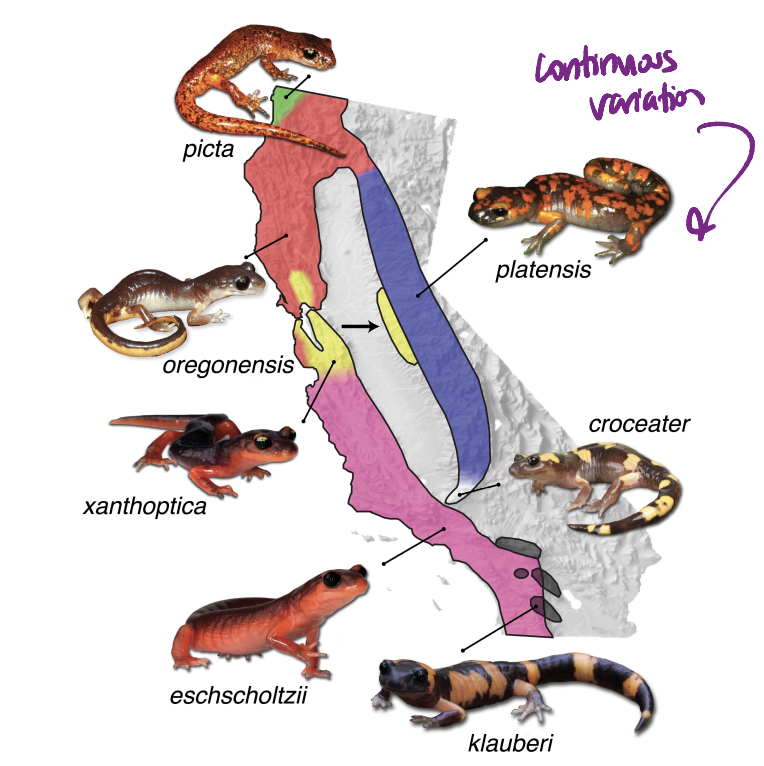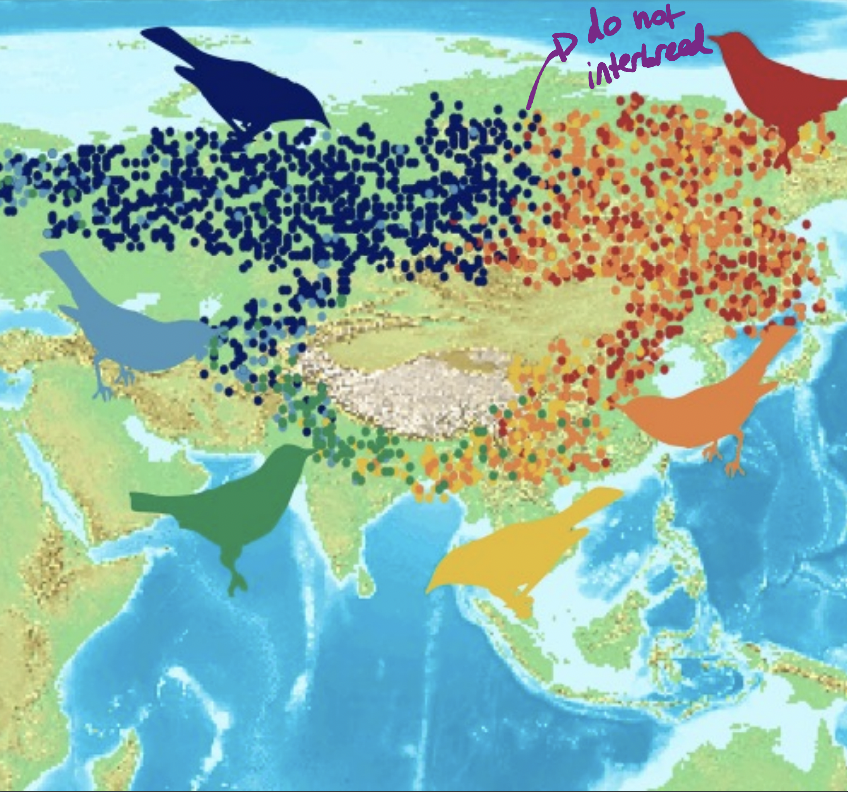Biology 5C ~ Lecture 19 ~ Consequences of Evolutionary Processes
0.0(0)
0.0(0)
Card Sorting
1/18
Study Analytics
Name | Mastery | Learn | Test | Matching | Spaced |
|---|
No study sessions yet.
19 Terms
1
New cards
The evidence for evolution can be found in:
-Genetics
-Mathematics + computer science
-embryology + morphology
-paleontology
-developmental + organismal biology
-biogeography
-earth + environmental sciences
-geology
-Mathematics + computer science
-embryology + morphology
-paleontology
-developmental + organismal biology
-biogeography
-earth + environmental sciences
-geology
2
New cards
Every biological observation we have ever collected corroborates the fact that life on Earth is the result of:
-Descent with modification
-We are all related and share a common ancestor
-We are all related and share a common ancestor
3
New cards
Artificial selection:
Breeding organisms with specific traits in order to produce offspring with identical traits.
-Selective breeding
-breed individuals with desirable traits
-Selective breeding
-breed individuals with desirable traits
4
New cards
Humans have used artificial selection by:
-Domestication of crops in early farming communities 10,000 years ago
-domestication of animals, like cat and dogs
-domestication of animals, like cat and dogs
5
New cards
Dog breeding:
-first species to be domesticated (15,000 ya)
-selectively breed for certain behaviors
-all one species
-selectively breed for certain behaviors
-all one species
6
New cards
Dr. Ted Garland's experiment with selectively breeding mice:
-selected for distance, voluntarily run on an exercise wheel
-After 24 generations, the distance mice could run on a wheel increased.
-After 24 generations, the distance mice could run on a wheel increased.
7
New cards
The biological species concept (BSC):
-populations, or groups of populations, within and among which individuals actually or potentially interbreed and outside of which they do not interbreed
-provides a clear research program
-provides a clear research program
8
New cards
The BSC:
-provides a clear research program
-reproductive isolation can be quantified
-many things we classify as separate actually can mate and produce feral offspring
-reproductive isolation can be quantified
-many things we classify as separate actually can mate and produce feral offspring
9
New cards
The longest running evolution experiment:
Lenski's E. coli experiment
10
New cards
Lenski's experiments with E.coli
-80,000 generations!
-The bacteria had evolved the ability to eat the citrate added to their flasks to help them ingest iron. (Aerobic citrate utilization)
-The bacteria had evolved the ability to eat the citrate added to their flasks to help them ingest iron. (Aerobic citrate utilization)
11
New cards
Mating preference:
Function that links female propensity to mate to the phenotypic distribution of potential mates
12
New cards
Why does mating preference matter for speciation?
-Can separate lineages over time
13
New cards
First example of evolving natural populations (Three-spine stickleback):
-Variation in "gill raker' length
--Different from various lakes and bays
--Different from various lakes and bays
14
New cards
Second example of evolving natural populations ("Ring species):
-variants interbreed with neighbors
-where the ring "meets" the other side---->no longer mate!
-Look at image!
-where the ring "meets" the other side---->no longer mate!
-Look at image!

15
New cards

Third example of evolving natural populations (Greenish Warbler):
-all birds belong to a single population that circles itself
-genetic distance increases with geographic distance!
-where the dots don't disperse, the populations do not interbreed (look at the image!)
-genetic distance increases with geographic distance!
-where the dots don't disperse, the populations do not interbreed (look at the image!)
16
New cards
The evidence for evolution comes from:
millions of observations across many disciplines
17
New cards
Humans use principles of evolution:
to selectively breed crops and domesticate animals
18
New cards
Experimental evolution uses:
laboratory populations to observe evolutionary mechanisms over generations
19
New cards
Speciation:
Two populations, becoming distinct species, has been observed in natural populations